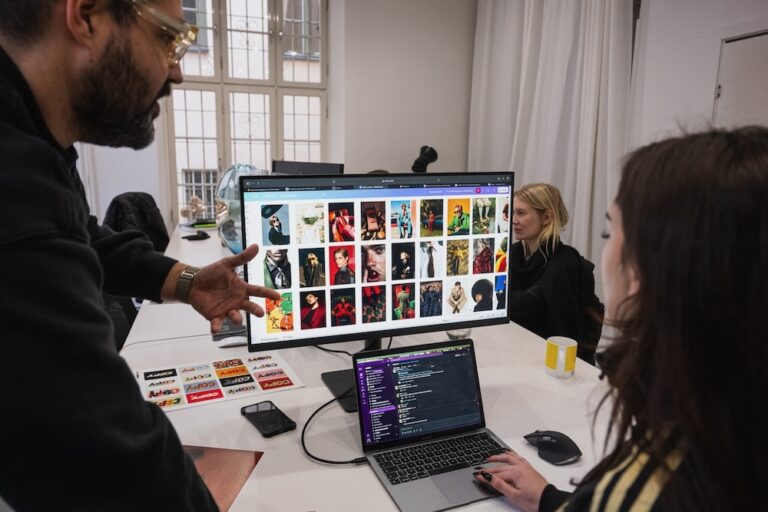This report was written against the backdrop of the need to better understand the dynamics of impunity and the factors that contribute to solving cases of journalist murders on the domestic level. Although cases of full justice are scarce, they demonstrate that justice can be achieved.
This statement was originally published on freepressunlimited.org on 1 November 2022.
Today we publish our 2022 Impunity Report, on the International Day to End Impunity for Crimes against Journalists, authored by Evelien Wijkstra and Jos Midas Bartman of Free Press Unlimited.
Background
Our research responds directly to the need for a better understanding when it comes to global dynamics of impunity and the factors that contribute to solving cases of journalist murders at the domestic level.
Although cases of full justice are scarce, in some cases justice can be achieved, which begs the question of how such achievements can be brought about more often. In spite of the urgency of this question, a systemic understanding of the dynamics of impunity has been lacking so far.
Purpose of the report
- Our aim is to contribute to a new and fundamental approach to addressing impunity for crimes against journalists with this report;
- To re-shift our primary focus from naming and shaming to expanding our understanding of how to achieve justice in cases of journalist killings;
- To create a better understanding of the causes of impunity for journalist murders and to lay out avenues to justice that can guide civil society actors in their efforts in combating impunity.
We hope the identified avenues to justice can inform the sector’s thinking on how to further justice for crimes against journalists.
Key findings
- Based on a statistical analysis, our research finds that when a central judicial/prosecutorial actor is involved in the investigation of a murder case, it increases the possibilities of justice;
- Added public pressure and monitoring of a murder case by colleagues or relatives of the murdered journalist combined with sustained media attention, are important contributors to the possibility of justice and have even proven to be decisive in several cases;
- Hybrid regimes – which combine both democratic and authoritarian institutions – are currently the most murderous regimes in the world for journalists. Yet, despite the fact that impunity is rampant, we also demonstrate that the most hopeful opportunities for improvement are present there.
Context
This report was written by the ‘A Safer World for the Truth’ project team at Free Press Unlimited.
A Safer World for the Truth works towards the pursuit of justice for crimes committed against journalists. The project consists of a series of investigations into cases where a journalist was murdered for doing his/her job. These investigations reveal new facts and information around the killings, paving the way for pursuing justice.
Executive Summary
Download a PDF of the Executive Summary
An Uphill Battle: from impunity to justice for journalist murders
A Report on Impunity on the occasion of the International Day to End Impunity for Crimes against Journalists 2022
In spite of a small but hopeful decline, it is hard to overstate the worldwide problem of targeted journalist murders. The Committee to Protect Journalists tallies 1448 of such murders since 1992. These murders constitute an attack on an individual, and undermine the functioning of our societies, not least because of their effect on people’s access to information and on the room for free public debate. To add insult to injury, the figure that 8 out of 10 of such murders result in impunity is by now a well known fact within the press freedom community. These impunity figures look even grimmer when it is considered that in less than 5% of cases globally, both the material perpetrator and the mastermind are caught.
This report was written against the backdrop of the need to better understand the dynamics of impunity and the factors that contribute to solving cases of journalist murders on the domestic level. Although cases of full justice are scarce, they demonstrate that justice can be achieved. This begs the question how such achievements can be brought about more often. In spite of the urgency of this question, a systemic understanding of the dynamics of impunity has been lacking so far. Solving these murders is a complex challenge that is influenced by many factors, including the case specific complexities, the societal and political context and the functioning of the different layers of the justice system. Laying out the avenues to justice therefore requires an understanding of local complexities and of the recurring patterns in the cases that lead to justice. It is the ambition of this report to identify these avenues.
In this report we use a multi-layered approach to arrive at the identification of avenues to justice. Importantly, in order to guarantee the pertinence of these avenues, we start with an assessment of the factors that contribute to the risks for journalists being murdered, and of the factors that increase the risks of impunity to follow. In order to fight impunity with concrete tools, we hold, it is imperative to understand its foundations. The CPJ database on journalist killings, investigations into cold cases of journalist murders by A Safer World for the Truth, and conversations with colleague experts in the field constitute our main sources of data to make this assessment.
As a result of our analysis we present multiple findings. An important finding is that hybrid regimes – combining both democratic and undemocratic elements – constitute the most murderous context for journalists, with impunity also being rampant in these contexts. Organized crime and power abusing local officials pose the most lethal danger to journalists. These actors often thrive on the back of a crippled rule of law, which is typical for hybrid regimes. As we find little evidence for a self-fuelling ‘cycle of impunity,’ we find that the causes of journalists’ murders and impunity are conflated. Both impunity and the risk of murder have similar underlying causes – predominantly the disfunctioning of the rule of law, which however in hybrid regimes highly differs per location. Concretely, this means that the culprits of journalists’ murders can sometimes hold such positions of power that they can cause impunity by subsequently being able to sabotage the investigation.
Taking the specific context that provides for lethal risks for journalists into consideration, we analyzed the effectiveness of multiple avenues to justice. We find that activating certain segments of the legal system can increase the likelihood of justice. Based on a statistical analysis, we find that the interference of central judicial or prosecutorial actors in a murder case can increase the likelihood of justice. The fact that central actors are specialized and located further away from the murder scene contribute to a higher degree of independence of the investigation. Many of the countries that experience high levels of journalist killings are large, wherein local judicial and executive institutions are often weaker and poorly insulated against outside influence.
Although important, the interference of central legal actors is rarely a silver bullet to justice. Public pressure created by colleagues or relatives of the murdered journalist, monitoring by civil society, and persistent media attention contribute to the probabilities of justice by making it harder for authorities not to act. In addition, we find that dialogue and knowledge-sharing among legal actors can also have a positive impact. Generally, the avenues that we present work better in concert and can even be mutually reinforcing. For example, public pressure can help to put the case under the attention of central actors.
With this report we hope to have contributed to a new and fundamental approach to addressing impunity for crimes against journalists. One that is focused on developing our thinking on how to achieve justice, while taking the causes of impunity into consideration. We believe that with this report we have identified several strategies that can set the wheels of justice in motion. We will continue to deepen our thinking in this direction and hope many in this sector will join us.



